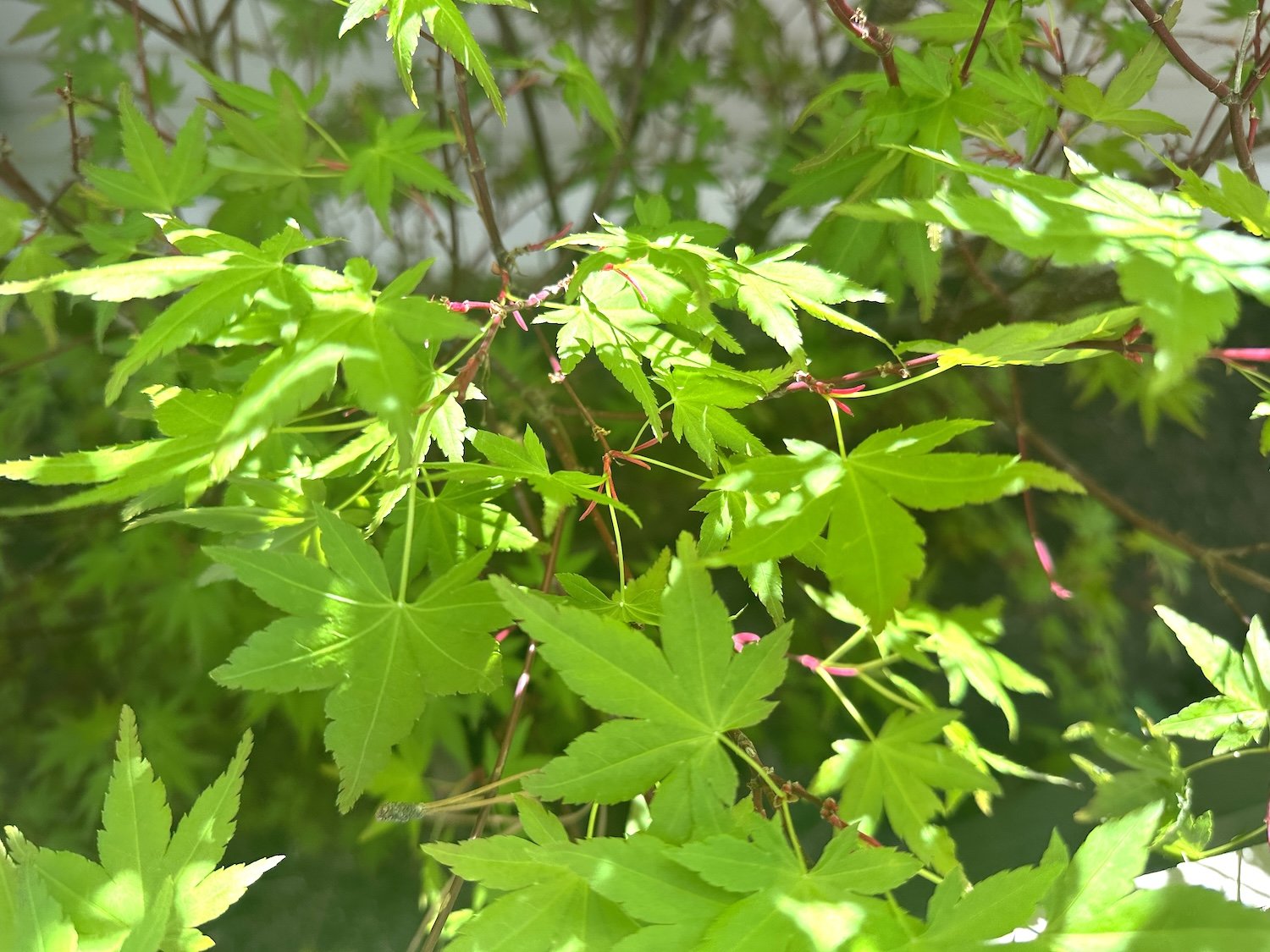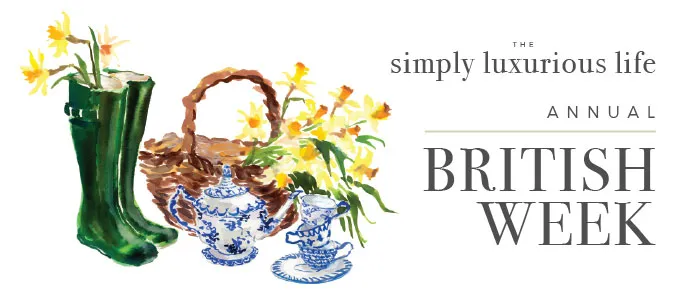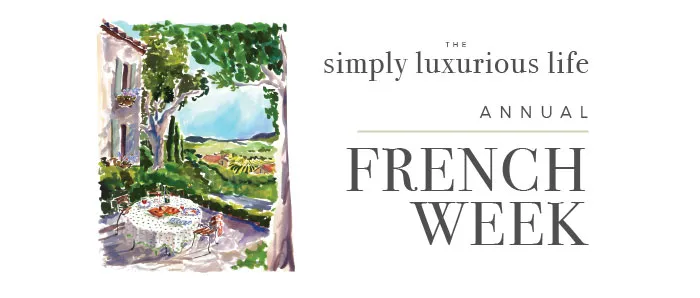Become a Member for as little as $4/mo and enjoy unlimited reading of TSLL blog.
To stroll through a Japanese garden, wander about amongst and around the many varietals of Japanese maples, (acers as they are more properly known I eventually learned), observe the intentional, yet soft curves and shapes each tree has been trimmed into with care, noting that bright color may not be present, but variations of green abound, is to soothe the mind through what the sense of sight reveals to us as well as touch as we run our fingers over the leaves and feel the cooler air on our face.
While many names have been given to gardens that center themselves around the cultivating of shady spaces, receiving regular rainwater often in humid locales, perhaps even complete with a stream or pond, whether called Zen, Tranquility or simply drawing inspiration from the Japanese gardens similar to those in Portland, Oregon, or Victoria, Canada at Butchart, the moment I first had the opportunity to visit one, there was a sense of home that washed over me.
A gentleness, the evident nourishment and a quiet space designing with Mother Nature, each aspect appealed to me, I felt both encouraged to relax but also infused with inspiration.
Perhaps this explains my affection for the Japanese maples that dot Portland neighborhoods ubiquitously, spied while wandering about in whenever I visit, and frequently seen when I previously called Portland home over nearly 20 years ago. Their slow growing nature speaks to the foresight, admiration and patience of the original gardener who welcomed the tree into their outdoor sanctuary, and as these homes change hands, the appreciation of the new owners to care for the tree well.
And so, this long-held affection explains why, even though I knew it was likely futile, four years ago (yep, during the pandemic), I purchased a young (very young) Japanese maple, hoping to find a home for it where it would be happy in my garden here at Le Papillon.
Needless to say, the tree wasn’t happy here, and promptly communicated this to me, shedding all its leaves and saying goodbye. I sidelined the idea of fulfilling my dream of welcoming this tree into my garden . . . until this past weekend.

Those who have been following my monthly musings in the garden posts will know that about two years ago, I began laying the bones of my North Garden with the goal of eventually creating my own Tranquility garden: conditioning the soil with enriched organic compost, removing plants that were not thriving in this narrow, yet private space between my house and my neighbors and then adding three Amur Maples (not Japanese) that my neighbor kindly offered when she decided to remove them from her yard. Two of the three made it, and over the past 18 months I have made a note to myself to replace the one that didn’t survive with another Amur Maple. This particular tree is positioned at the entrance to the garden, and will provide welcome, as well as privacy, as well as ‘outdoor interest and decoration’ for my guest bedroom as you gaze out the window, and so really, this tree is tasked with quite a few responsibilities.
As mentioned above, this is a north-facing garden, so all-day shade, and only indirect sunshine in the beginning and primarily at the end of the day.
Over the past two months, I have set myself the “to-do” of finding a replacement Amur Maple, but had yet to find what I was looking for, or should I say, none of the one’s I saw spoke to me, but yet, that was supposedly the tree I thought I needed to purchase to replace what had been there. Which leads me to how we get in our own way unwittingly.
Sometimes it takes us time to realize the unhelpful blinders we have instituted. Unconsciously I had decided that the new tree had to be the same tree that had died in this spot. It didn’t register that I was forcing a tree that wouldn’t be entirely happy into this spot, i.e. the previously tree’s lack of success. We make this mistake in many other arenas of our life as well – relationships, career paths, daily routines, traditions, how anything ‘must’ be done. Why? Because it was the way we’ve done it in the past, but what we should be saying is, because it is all that I know.
In my mind, I had simplified the decision of choosing which tree to plant at the welcome into my Tranquility Garden by reverting to what had been there (albeit, that tree had died, which makes this point all too obvious that it wasn’t the right decision, but still I persisted). But was that really the best choice? (rhetorical-obviously-easy-to-answer question intended)
As our lives become filled with appointments, schedules, responsibilities and chores, we may think we are helping ourselves out by doing what we have always done, but often, with a bit more patience, time to explore and do more research about what really is the best decision, we can eventually settle upon a far more beneficial choice that will enhance the quality of our days, relationships and thus life experience.
Life has a funny way of trying to nudge us into the best decision for the life we have set an intention to live. When we keep running into roadblocks — in my case, not finding just the right Amur Maple that spoke to me again and again — we are given an opportunity to stretch beyond the narrow limitations we set for ourselves, often set simply because it is what we know, whether consciously or unconsciously.
When we instead see these roadblocks has helpers trying to redirect us to look somewhere else, or look for something differently or that is different and therefore unknown, it has been my experience that we land upon exactly what we hoped we would find but didn’t know how to precisely explain to those who may have been trying to help us because really, how do we describe what we had ever experienced first-hand? We can’t, not precisely anyway.

Back to my search for a tree replacement.
Arriving at a trusted nursery fully stocked with trees of all varietals over the past weekend – ones that love sun, those that thrive in shade and oodles of fruit bearing trees – I confirmed with a phone call that they had Amur Maples. Okay! This is where I might finally find the tree I need!
However, yet again, nope, the trees, the Amur Maples, didn’t speak to me. Indeed their trees were lovely, healthy and ideal specimens of their name, but it didn’t feel to me that it was the tree my garden called for. Upon asking for assistance as I heard there was an Amur Maple shrub, as opposed to the tree, I thought maybe that was the difference and why I couldn’t find what I had been searching for – I had been looking at the tree variation and not the shrub. So I followed behind the staff member as we searched for the shrub, and into the shade tree section we went.
It dawned on me in this moment, while wandering about the Japanese maples, that my north garden was shady – hello Shannon!, and wouldn’t such a tree be ideal, and why was I so cemented on the Amur Maple?
After a bit of conversation with the staffer, me explaining the new home for the tree, that she then advising that the Japanese Maple was ideally suited for what I wanted and the Amur Maple wouldn’t thrive, my decision settled itself with ease. A Japanese Maple (acer palmatum) it would be.
Without realizing it, even when we desire to improve the quality of our lives, we can remain narrowly focused on how to improve it. So much so that we keep making the same unhelpful choices that give us exactly what and only what they can give us and have given us, yet it isn’t the ‘new and improved’ we seek.
Often what is needed requires that we expand our search, stretch our mind’s knowledge and take the time to ask different questions of different people more knowledgeable than ourselves in the area we wish to change. When we do this, we realize, yes, we were getting in our own way unknowingly but no longer is that the case, and that is the missing piece in the puzzle that is about to be solved.
When we begin to do things differently, even in small steps or petite ways, and as a result experience the change we had hoped for, we become more courageous to do things differently in more significant ways that have the potential to usher in the elevated change and life improvement we seek. Today, and as you move forward through your everydays, examine what you are trying to improve or change, and then honestly explore how, or if, you are changing the equation or simply doing the same thing and hoping for a different outcome.
If we are willing to be honest with ourselves, that is when we will open the door to the life and the change we seek. Now all we have to do is step through and bravely do what we’ve never done before, to achieve what we’ve never experienced before. You can do it. Be brave.
~The pics included throughout this post capture the newly planted Japanese Maple now in my garden at Le Papillon. Look for more pics, videos and updates in May’s monthly gardening post.
SIMILAR POSTS YOU MIGHT ENJOY
How to Let Go of Self-Imposed Limitation, episode #186






Shannon,
What a great message you brought to us through your garden experience! Your messages inspire me to pause and reflect more often and dig a little deeper to see what life is teaching me.
Thank you,
Deb
You are most welcome Deb. Life always provides opportunities to learn when I slow down to ponder what is offered. Grateful that these lessons will never cease. 🙂
Shannon sometimes we’re so fixated on one particular thing that we cannot see the wood from the trees( pardon the pun) Acers are so pretty.I had two beautiful ones in England and would have liked one or two here in France but they will look incongruous on a farm. I’ve settled to just admire them from afar. I feel that the Acer Palmatum found you not the other way round. Hope you and your guests have
many years of enjoyment of your tranquility garden. Bonne semaine. Kameela?
Kameela,
I love your perspective immensely! I think you may be right 🙂 And to your point of choosing to enjoy Acers from afar, there are many plants and flowers I have had to resign myself to do the same. We do the plant or tree no good by trying to force it to do well, or thrive, where it isn’t meant to. 🙂 A lovely lesson there as well. Grateful you were able to have a few Acers while in England. Thank you for stopping by!
“In any given moment we have two options: to step forward into growth or step back into safety.” — Abraham Maslow
So happy you found the perfect fit for your garden. Great piece, Shannon.
~Michelle
Hi Shannon, what a perfect nudge & timely reminder that it always good to consider other options if we are not finding the answer we seek, so look forward to further updates on your tranquility garden.
Kiri
Isn’t nature a wonderful teacher? Finding the right plant for the right space is an adventure but also a quest. A few years ago I was determined to have a Bonsai garden. I spent time at a famous conservatory taking lessons from experts. I bought books. I bought little tools. I killed the whole bunch of them! I still don’t know what I did wrong but let me tell you, I did wrong affronting Mother Nature and my wallet. This Spring I almost repeated the debacle, I reasoned that I had all the information and every tool known to be essential. Then I remembered my lesson I swore not to repeat, instead, I picked up a “Lucky Bamboo,” a descendant of the asparagus genre native to Africa, not a real bamboo plant. The arborist stated he had never known one to die. So far so good, I have plants everywhere. However, no Bonsai. I learned my lesson, and this lesson illustrated how I can and do get in my way. I enjoyed your story, I am sure your tranquility garden will bring you great joy and peace.
This post spoke to me. I frequently get stuck trying to force something because that’s the way it’s supposed to be, or always has been. If I just let go, I’m surprised by the perfect solution that presents itself. Thank you!
Trish, thank you for sharing your experience. You are not alone! 🙂 I have found myself stuck in trying to force an old choice to work (when it no longer does), only to find, a new idea is far more to my liking. 🙂 Thank you for stopping by.